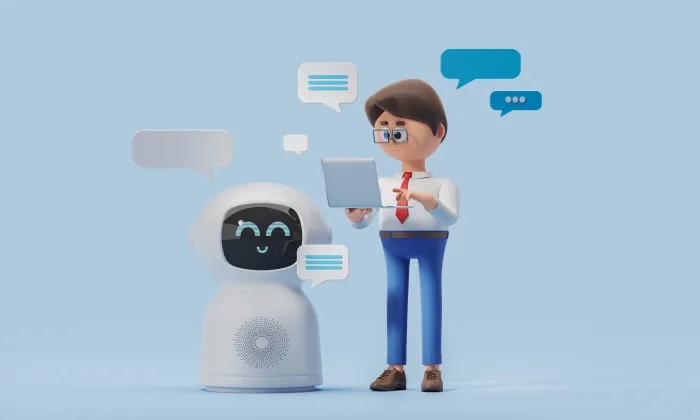Are in-car speech datasets evolving to support naturalistic, long-form conversational AI?
Speech Datasets
Conversational AI
In-Car Technology
In-car speech datasets are evolving to meet the demands of naturalistic, long-form conversational AI, crucial for the next generation of automotive voice assistants. These datasets capture the nuanced dynamics of real-world vehicle environments, thereby enhancing the capabilities of voice-activated systems. This comprehensive guide explores how in-car speech datasets are transforming, driven by advancements in AI, and their critical role in automotive innovation.
Why Evolving In-Car Speech Datasets Matter
The push towards conversational AI in vehicles is essential for creating intuitive and user-friendly interactions. Here's why these evolving datasets are pivotal:
- Capturing Realistic Interactions: Traditional datasets often overlook the unique challenges of in-car environments, such as diverse background noises and speaker variability. Modern datasets emphasize spontaneous, context-rich speech, enhancing AI systems' ability to respond authentically.
- Supporting Long-Form Dialogues: Earlier models focused on single commands; however, contemporary datasets support multi-turn dialogues, maintaining context over extended interactions. This is vital for tasks like navigation and infotainment controls.
- Addressing Diverse Conditions: Vehicle interiors have complex acoustic landscapes influenced by factors like engine noise and road conditions. Evolving datasets ensure AI systems perform reliably across these varied environments, boosting overall robustness.
How In-Car Speech Datasets Work
The evolution of in-car speech datasets is underpinned by sophisticated methodologies and advanced annotation strategies. Here's how they function:
- Data Collection Methodology: Recordings are conducted in real-world driving scenarios, capturing acoustic conditions across urban, highway, and rural settings. Platforms like Yugo facilitate crowd-sourced data collection from native speakers, ensuring a rich variety of speech patterns.
- Types of Speech Captured: Datasets include wake words, single-shot commands, and rich dialogues. The diversity is crucial for training models that can comprehend nuanced interactions.
- Annotation Strategy: Speech & Audio Annotation enhances dataset usability, including speaker turn boundaries, intent tags, and environmental noise labels. These detailed annotations are critical for effective model training.
- Robust Metadata Inclusion: Each audio sample is paired with comprehensive metadata, covering speaker demographics, car types, and acoustic conditions. This metadata is vital for targeted training and evaluation.
Real-World Impacts & Use Cases
The advancements in in-car speech datasets have led to significant real-world applications:
- Voice-Enabled Infotainment Systems: A luxury EV brand used a multilingual dataset of over 500 hours of spontaneous speech to develop an advanced voice assistant, enhancing user experience globally.
- Emotion Recognition in Autonomous Vehicles: An autonomous taxi service implemented models fine-tuned with high-traffic speech data, allowing the system to adapt interactions based on passenger emotions.
- Custom Solutions for Tier-1 OEMs: A leading automotive manufacturer sourced custom data collection for specific car models, focusing on real-time navigation and infotainment commands, optimizing AI for unique acoustic profiles.
Overcoming Common Challenges
Despite advancements, several challenges persist:
- Acoustic Variability: In-car environments vary significantly, affecting speech clarity. Continuous dataset refinement is needed to include diverse recording scenarios.
- Data Bias: Reliance on synthetic or overly clean datasets can result in poor real-world performance. Ensuring a balanced representation of demographics and acoustic conditions is essential.
- Annotation Quality: The success of training data depends on precise annotations. Investing in thorough annotation strategies is crucial to mitigate model bias and enhance performance.
The Future Landscape of In-Car Speech Datasets
Looking forward, in-car speech datasets are poised to support:
- Multi-Agent AI Systems: Supporting interactions between multiple AI agents within vehicles, enhancing collaborative functionalities.
- Emotion-Rich Dialogue Data: Capturing emotionally nuanced dialogues to enable more empathetic AI systems.
- Federated Learning Approaches: Allowing personalized AI experiences based on user interactions while maintaining data privacy.
These advancements underscore the transformative potential of in-car speech datasets in shaping the future of conversational AI in vehicles. By focusing on realistic, context-rich interactions, these datasets empower automotive AI systems to deliver enhanced user experiences. To leverage these benefits, organizations should prioritize diverse, high-quality data collection and rigorous annotation strategies, ensuring their AI models remain robust and adaptable.
Empower Your AI Projects
For organizations aiming to elevate their AI capabilities in automotive applications, FutureBeeAI provides both ready-to-use and custom-built datasets designed to meet industry-specific needs. Investing in high-performing datasets can significantly enhance model accuracy, reduce deployment time, and increase user satisfaction.
What Else Do People Ask?
Related AI Articles
Browse Matching Datasets
Acquiring high-quality AI datasets has never been easier!!!
Get in touch with our AI data expert now!








